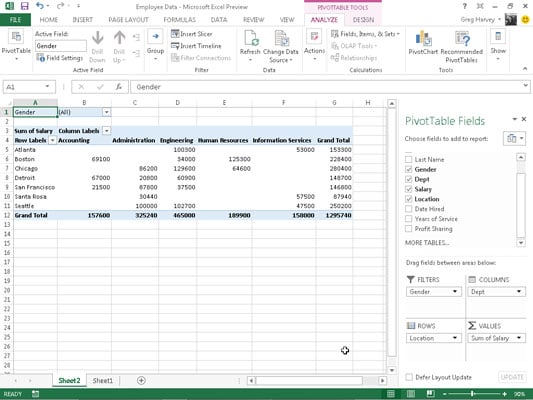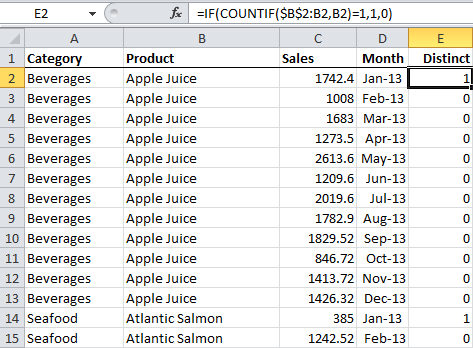
Once you've created your table, you can click the PivotTable Analyze tab to view and manage more settings, or the Design tab to customize its color and style. You can add multiple data fields to any of these sections, and move things around until they look the way you'd like. Adding fields to the Filters area lets you filter your table by the type of data in that field. Drag fields to the Columns and Rows areas, and then drag fields that represent values to the Values area. You'll use the Pivot Table Fields bar on the right to lay out your table in columns and rows. Click OK to place your pivot table on the selected sheet. Your new pivot table will be placed on the active worksheet by default, but you can change the sheet name and range under ""Existing Worksheet"" to put it elsewhere, or select New Worksheet to place it on its own brand new sheet. Or, if the data is in an external database, select Use an external data source, and then choose that database and range. You can enter your data range manually, or quickly select it by dragging the mouse cursor across all cells in the range, including the labeled column headers. To create a pivot table, click the Insert tab, and then click the PivotTable icon on the toolbar. (Note: If you select a single cell in the data range, Excel will automatically identify, and select the whole data range for your Pivot Table.A pivot table is an interactive table that lets you group and summarize data in a concise, tabular format. You’ll have the best chance of success when the tables have a common field with unique values. Keep in mind that the rows of each table need to be related to each other in some way. 3 A Create PivotTable window will appear. 2 Click INSERT in the Ribbon tab, then clicking Pivot Table button in the Tables group. 1 Click any single cell in which you want to insert pivot table (select B16 in this example). Select any cell within the data range or select the entire data range to be used in your Pivot Table. Using the new Object Data Model feature in Excel 2013, you can cherry-pick fields from multiple worksheets to create a unified PivotTable. The below data set will be used in the following pivot table examples. We will first create a very simple pivot table, which shows the total sales for each of the four sales reps in the above spreadsheet. The spreadsheet records the sale date, the invoice reference, the invoice total, the name of the sales representative, and the sales region.

If you have an earlier version of Excel, go to the page on how to create a pivot table in Excel 2003.įor this pivot table example we use the spreadsheet below, which lists a company's sales figures during the first quarter of 2016.

Note that the directions on this page apply to current versions of Excel (2007 and later). This page provides a step-by-step guide of how to create a basic Excel Pivot Table.


 0 kommentar(er)
0 kommentar(er)
